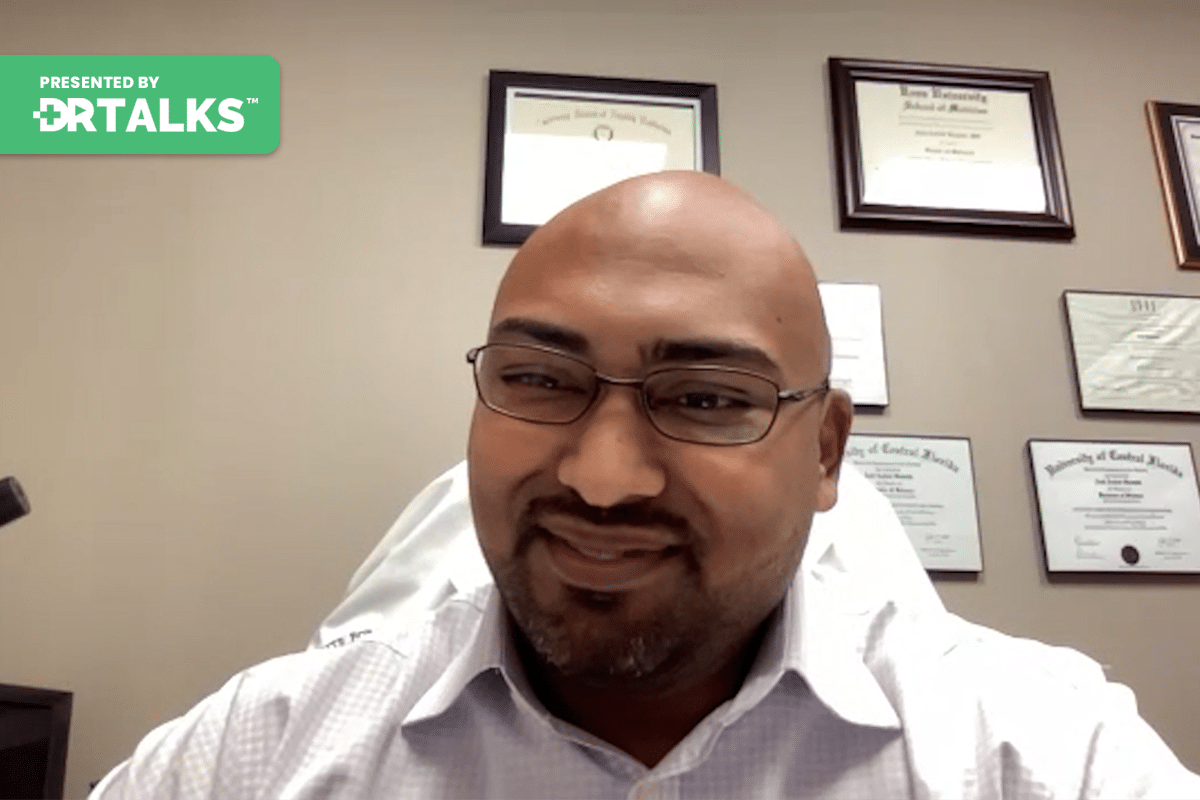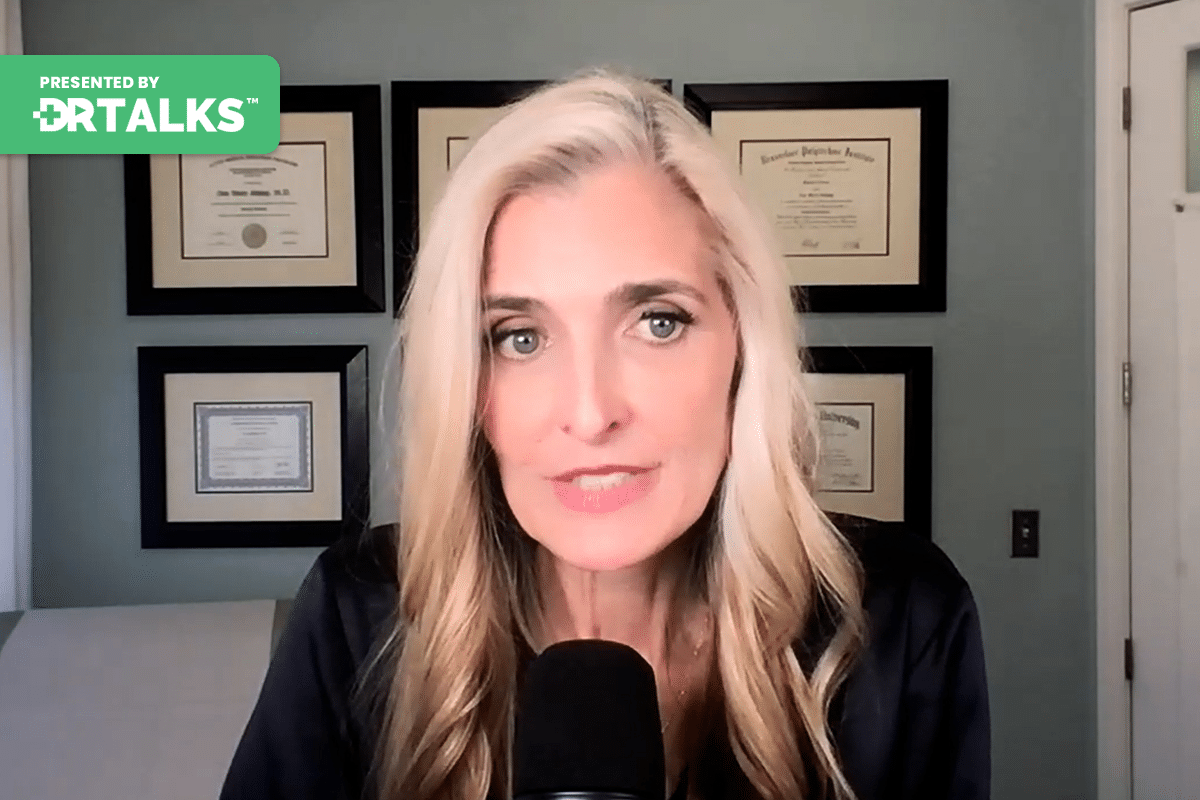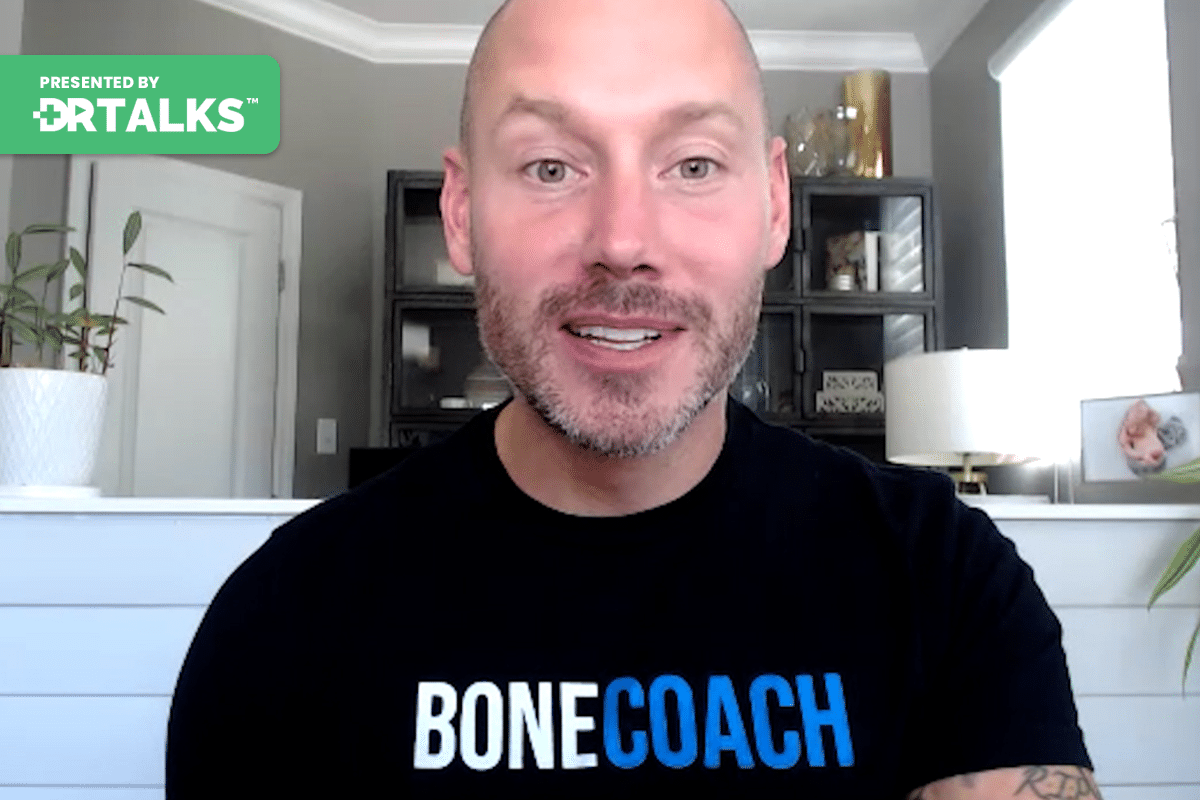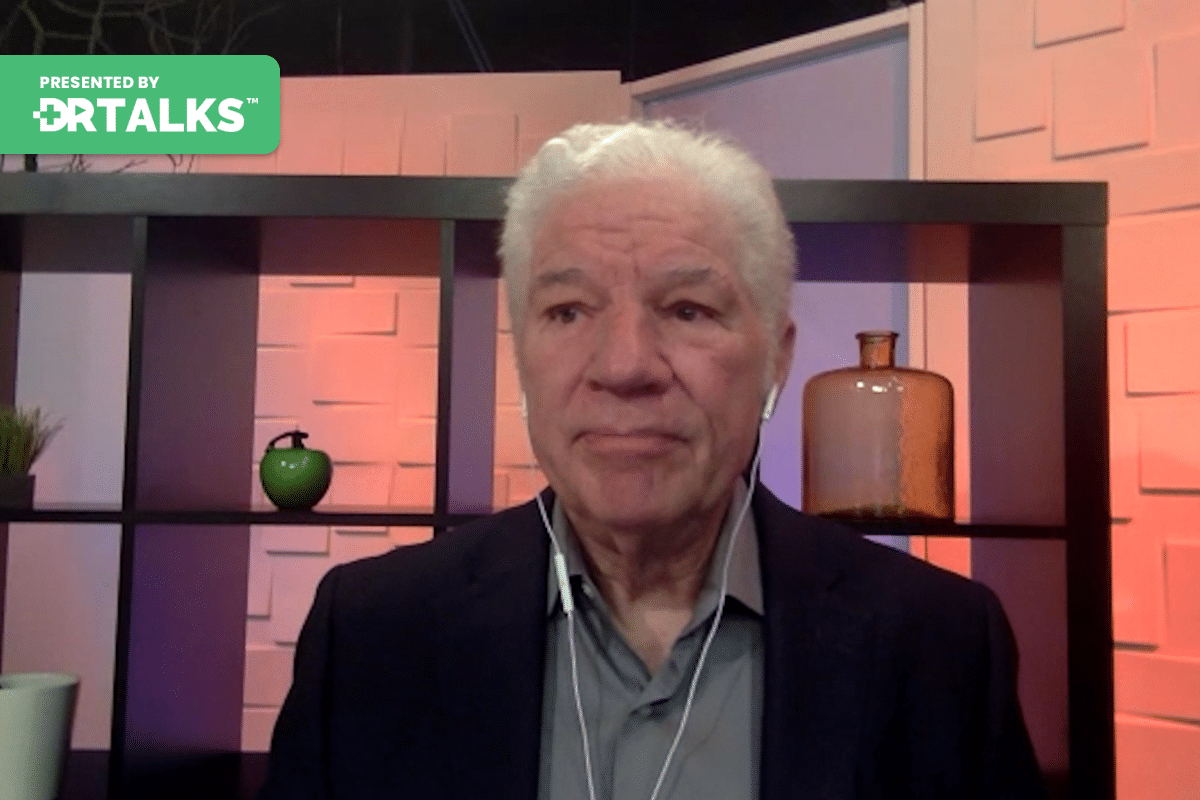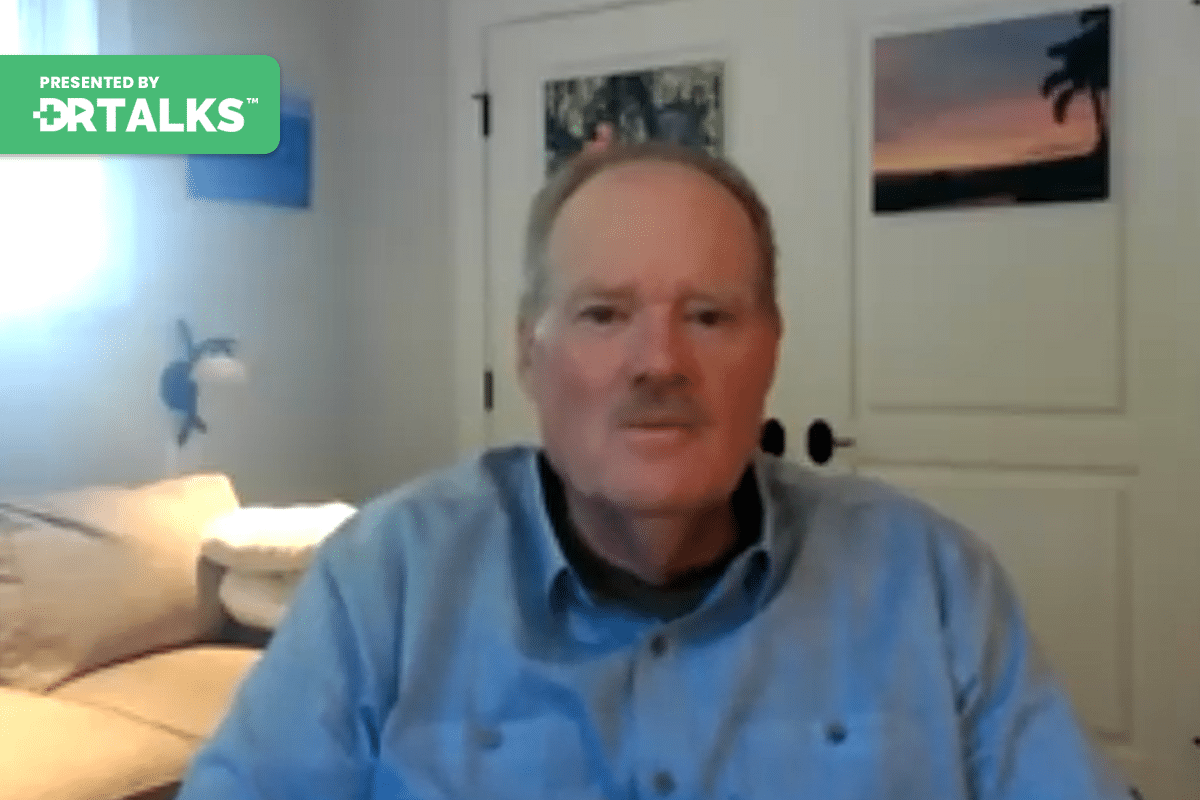Join the discussion below

Dr. Ann Shippy is Board Certified in Internal Medicine and Certified in Functional Medicine. She operates a successful private practice in Austin, TX where she is known for her compassionate, attentive, and tireless approach to caring for her patients. She has gained a considerable reputation for successfully diagnosing and treating... Read More

Anil Bajnath, MD, MBA, IFMCP, ABAARM, MIFHI
Dr. Anil Bajnath is a Board-Certified Family Physician. Author of The Longevity Equation: The Step-By-Step Blueprint to Hack Your Genes, Optimize Your Health, And Master the Art of Existence. Dr.Bajnath currently serves as Adjunct Faculty with the Department of Clinical Research and Leadership at George Washington University School of Medicine... Read More
- Delve into the intricate details of the Cell Danger Response, Molecular Hypometabolism, and the dynamics of biotoxins such as Actinomycetes, Endotoxin, and Mycotoxin exposure
- Understand the role of secondary messengers in detecting stealth biotoxins and the potential risks of using antifungals
- Equip yourself with knowledge of the latest scientific findings and research related to the biological dimensions of transcendent states
- This video is part of the Mold, Mycotoxin, and Chronic Illness Summit
Related Topics
Actinomyces, Actinomyces Bacteria, Actinomycetes Colonization, Antigen, Aspergillus Mucosa, Biomax, Blood Microbiome, Candida, Chronic Inflammatory Syndromes, Cirs, Cleaning Protocols, Coagulation, Complement Activation, Gene Expression, Gut Dysbiosis, Immunohistochemical Staining, Inflammasomes, Innate Immune Response, Map Kinase Signaling, Mold Illness, Mold Recognitions, Molecular Signature, Mycotoxins, Omics Of Medicine, Tgf Beta Receptor Signaling, Th1, Th17 Factors, Th2, TranscriptomicsAnn Shippy, MD
Welcome to the Mold, Mycotoxin, and Chronic Illness Summit. Today we get to speak with Dr. Anil Bajnath. He’s board-certified in family practice medicine and functional medicine for aging. He is the author of The Longevity Equation and a member of the faculty at George Washington School of Medicine. He’s an expert in worker testing and so much more, and he just has this fascination with precision medicine, using the latest technology to help each individual. Thank you so much for joining us.
Anil Bajnath, MD, MBA, IFMCP, ABAARM, MIFHI
Thank you for having me. It is a pleasure.
Ann Shippy, MD
It was just this very small snippet of your bio. It is quite impressive.
Anil Bajnath, MD, MBA, IFMCP, ABAARM, MIFHI
Yes, I like exploring things, needless to say. The journey for me began many years ago, almost in my teenage years, exploring dark field phase contrast microscopy, looking at natural peripheral blood, and studying at a European Biological Medical Center. This narrative of these different mold illnesses and fungi is a real thing. It is interesting to see how science and technology have been translated and expanded over the years to get us where we are today. I am excited to unpack some of the information with you today. Thank you.
Ann Shippy, MD
Yes, I love how everything is coming together. Explain some of the symptoms we see with mycotoxins and mold illness, and then understand it at such a detailed level of what is happening in the body, all the way down to gene expression, or transcriptomics. I thought that they would share a little bit more about your story and how you got here, and then wrap that into what transcriptomics says.
Anil Bajnath, MD, MBA, IFMCP, ABAARM, MIFHI
Yes, cool. Thank you. As you mentioned, we are involved with some of the research here at George Washington University and with the faculty. I am the course director of the Omics of Medicine for the Fellowship in Integrative Medicine, where essentially I train other providers and fellows to connect the molecular dots from the genome to the path of the genome, and a part of that translational science process is the use of what is known as transcriptomics. Essentially, transcriptomics goes back to the central dogma of biology that we all learned about in our science courses in high school, which is DNA into RNA and RNA into protein.
When we are looking at mold illness, it is just very fascinating because, again, with my story, I got into a technique with that dark field phase contrast microscopy, as I was alluding to, and I came across different levels of research and publications from various physicians and PhDs that identified these different anaerobic fungal forms and peripheral blood. There has been some research to further quantify this and identify it with immunohistochemical staining. I have identified signatures and patterns consistent with Aspergillus mucosa and Candida within peripheral blood, but that does not necessarily translate to true fungemia. But more so, I believe this could be coming from colonization and a dysbiosis within the gut that is bleeding over and making its way into circulation, thereby influencing the blood microbiome, the blood fungum, or whatever. We can see some of those different factors.
Furthermore, my interest in Omics led me to pursue training with Dr. Andew Hayman, who’s my mentor at George Washington University, I learned about CIRS, or chronic inflammatory response syndrome, many years ago and was completely fascinated by it because there is always a subset of the population that, no matter what you do, you could balance your hormones, support their adrenals, get them on all sorts of supplements, and they are just not responding to these different interventions, it makes you question, What am I missing? I feel as though that missing link is, as further defined by CIRS medicine. as this is a chronic issue that will last greater than six months and pulls into the mix. At various levels of the immune system, which are at the heart of this, there are various inflammatory mediators from both the TH1, TH2, and TH17 factors, with additional associations with coagulation, that are involved in this equation as well as complement activation.
Ultimately, at the heart of CIRS medicine, there is an innate immune response to an antigen that is detected that is not being presented to the adaptive immune part of the immune system. This was my training with Dr. Andrew Hayman. Again, he and Dr. Shoemaker are the ones who have done all the research and brought me into the circle. We are leveraging the use of transcriptomics in clinical practice, essentially, to further illustrate what that means clinically. I would say that if you were to look at the transcriptome, I would make the analogy that if your DNA were the instruments of your symphony orchestra, the transcriptome is a harmony coming off that instrument. Certain things could be upregulated in red within a test or downregulated in blue within the transcriptome in a GENIE test. Essentially, this is looking at how that environmental slash genetic interface is influencing DNA behavior. Certain things are going to be regulated. Downregulated based on these environmental stressors and responses, your body will sing a unique tune based on these various environmental stimuli. That is what transcriptomics is. We use it to further define and map out some of these unique molecular patterns associated with CIRS, or chronic inflammatory response syndrome. as it relates to biotoxin illness.
What we have found in our research is that essentially 42% of people who are grappling with CIRS are dealing with something called Actinomyces, which is a bacteria that behaves like mold. More specifically, it is a gram-positive, facultative, anaerobic spore-forming filamentous bacteria that is very ubiquitous in our environment and can be colonized in water-damaged buildings and within our skin. That is 42% of what we are seeing here based on the molecular signature of the gene, which is involved in mediating the process of CIRS. Additionally, another 38% that we see it is deal with mycotoxins and these various forms of inflammasomes, and only 7 to 10% of our studies have a true signature for mycotoxins within our clinical presentation upstairs. 42% active, 38% ish endo, and 7 to 10% mycotoxins we see as influencing CIRS.
Ann Shippy, MD
I just want to pause here because what this tool does is, as you are working with your patients, it helps you define what treatments are necessary next because you do different things that are just showing the mycotoxins versus the mycotoxin versus the Actinomyoses.
Anil Bajnath, MD, MBA, IFMCP, ABAARM, MIFHI
Yes. Keep in mind that this tool is meant for research purposes only. It is not intended to diagnose or treat, but it does provide us with additional information that points us in directions that might have been obscured through other forms of testing.
Ann Shippy, MD
Do you have good ways to look for the endotoxins, or for that Actinomycestes, other than these?
Anil Bajnath, MD, MBA, IFMCP, ABAARM, MIFHI
There are ways to look for it in terms of Actinomycetes that can be identified through enviro-biome testing, a company called EnviroBiomics.
Ann Shippy, MD
Testing in the environment, but not in the body.
Anil Bajnath, MD, MBA, IFMCP, ABAARM, MIFHI
In the environment, correct? Yes. They also have the skin colonization test, as well. What we find is that a lot of people are colonized with Actinomycetes on their skin, and the extent of Actinomycetes releases several different forms of toxins, including actinomycin and mycolic acid. This activates the complement, pokes holes in the cells, and triggers this whole inflammatory response. The way we map out Acteno is through a company called BioMax, and we look at what is known as the dominance index and prevalence index. That gives us some further information about connecting the molecular dots from the transcriptome to the envirobiome, so to speak.
Ann Shippy, MD
Let us explore this Actino a little bit, then come back to just the other areas because we have not covered this on the summit so far. I think it is an important piece that I want people to know about. Can you just walk us through the thought process that you have for the next steps and what you would recommend for patients when they come back for the positive transcriptomics on the GENIE test for Actinomyces?
Anil Bajnath, MD, MBA, IFMCP, ABAARM, MIFHI
Yes, and that is going to be very specific with what is called TGF beta receptor signaling on the GENIE test, along with map kinase signaling. There are these different secondary messengers that are upregulated in response to Actinomycetes, specifically this unique signature. Essentially, this is bacteria that is very ubiquitous in the environment, especially in water-damaged buildings. As we know, these water-damaged buildings are very poorly microbial. It is not just mold that we are seeing. We’re seeing all sorts of fun things within this colonization and this bacteria that releases these gases. It is a volatile acid and gives off a very weird smell. Typically, you see mold, and you smell Actino.
Depending on the number of areas within the home, there is a very specific cleaning protocol that needs to be followed in regards to vacuuming the mattress with a HEPA filter vacuum twice weekly and washing your sheets twice weekly. There are skin decolonization protocols out there as well that are being explored now to help decrease the microbial burden when it has a higher human habitant index, so to speak. It just depends on what we find there clinically. It is very interesting to see, and sometimes again, what we see is that the genetic haplotype correlates with the protein, the transcriptomic signature with the proteomic signature, and the enviro-marker signature. We connect those molecular dots, so to speak, and see how it all translates. Yes, there are very specific cleaning protocols for the extent of Actinomycetes.
Ann Shippy, MD
Which a lot of times I think gets missed when we are just looking for the mold.
Anil Bajnath, MD, MBA, IFMCP, ABAARM, MIFHI
Correct.
Ann Shippy, MD
This is important.
Anil Bajnath, MD, MBA, IFMCP, ABAARM, MIFHI
To speak about some of them again, I deal with some of the legal cases tied to CIRS and water-damaged buildings. This could be a very tricky area of medicine. So there are a lot of legal factors that come into play. You need to have good data. Unfortunately, it is looking at some of the urinary mycotoxins. That is not going to be clinically applicable in a court of law. It is not FDA-approved. If that is even brought into the equation, that could vary your case because it is not an FDA-approved test. There are a lot of criticisms of the urinary Mycotoxins test versus some of the more objective data that we can get that cannot be argued or refuted comparatively.
Ann Shippy, MD
What data is that?
Anil Bajnath, MD, MBA, IFMCP, ABAARM, MIFHI
That is going to be the combination of the different environmental tests and then walking through the research behind CIRS medicine. In regards to the HLA haplotypes, we know that 22% of the population carries with it a very specific haplotype that predisposes them towards these environmental hypersensitivities. then, again, making the appropriate case diagnosis for CIRS. As you may know, it is clearly defined based on the 2008 GAO and 2018 consensus for what is defined as meaningful exposure. We know that there are 13 symptom cluster categories, and you need eight out of 13 symptoms.
There is also the use of the visual contrast sensitivity test, which is also pulled into the mix for diagnosis. You would need three out of six objective biomarkers to further define a CIRS diagnosis, and as you may know, there are multiple papers published in over 25 publications with over 4,000 patients that give this a little bit more credibility regarding the legal aspects. We are dealing with a mild illness, so to speak, or CIRS as a whole. This has been further validated with two randomized, double-blind, placebo-controlled trial study publications as well. The research is starting to catch up to what we are seeing and observing here clinically. If you are ever pulled into any of these legal battles, it could be very challenging. Making sure you document things linearly and objectively is important when taking on this issue clinically.
Ann Shippy, MD
Yes. I think for people listening who do feel they have a lawsuit involved, it is so important to find a physician who is familiar with how the law works because it is a whole different approach than if you are just going to somebody to get well. I think the efforts behind it to be successful in a lawsuit are important. I think somebody who can navigate the legal system and know what is expected is important.
Anil Bajnath, MD, MBA, IFMCP, ABAARM, MIFHI
Yes, there are a lot of moving parts and variables involved.
Ann Shippy, MD
Yes, that is going to be changing. As our science gets better with mycotoxin testing, a lot more studies are done in that area too, because not everybody who is sick or old has a full-service diagnosis. It can show up in a lot of different ways, but certainly, if you have a CIRS diagnosis and there is something legal going on, you want support for it. Because it is just getting better.
Anil Bajnath, MD, MBA, IFMCP, ABAARM, MIFHI
Yes. It is a lot. It is a lot. I think you hit the nail on the head because sometimes it is not a full-blown CIRS, but maybe there is historical exposure that is leading to that immune system priming that never got resolved. At the heart of this is a dysregulated innate immune response that could not put out and extinguish that fire, so to speak. As you may know, there are more than 30 different entities that make and trigger CIRS, including beta-glucans, mannans, spirocyclic drimanes, LPS, actino hypo-fragment, cell wall fragments, endotoxins, anginous, mycotoxins, hemolysin, and all sorts of things that could be found that drive this immune response.
Ann Shippy, MD
It makes sense. There are so many things in our bodies and our environments that the immune system is trying to work on, which then creates this collection of symptoms and biology.
Anil Bajnath, MD, MBA, IFMCP, ABAARM, MIFHI
Correct. Yes, it is very fascinating.
Ann Shippy, MD
Let us dig into some of those other aspects of biology. I know that, especially with the GENIE tests, you can get a much better indication of the whole type of metabolism that is happening. The cell’s danger response and physiology—let’s talk a little bit about what those things are and why they matter.
Anil Bajnath, MD, MBA, IFMCP, ABAARM, MIFHI
All very fancy words in our space. It is very interesting stuff because, at the heart of this if you ever go through a GENIE test, sections one and two look at metabolism and insulin signaling, which is very important. At the heart of this, CIRS is an issue of mitochondrial insult. Stemming from cell danger response type two. Cell danger response, as you may know, occurs as the cells perceive a danger and respond by taking this defensive posture so that they can conserve energy. There are these various biotoxins that are ultimately what make ribose toxic. These ribose are toxic to the ribosomes of your cell. Within the heart of all of this is that the cell’s going to take this defensive posture and try to conserve energy, and you are going to see that ultimately there is a downregulation or suppression of the ribosome and the mitochondrial chromosomal RNA.
When we see that, we can see that both on a large and small subunit level of ribosomes, which means there is decreased protein production and a decreased mitochondrial electron transport chain, and this gives rise to a lot of the symptomatic presentation in regards to energy production. This could also be further quantified when we see this, with an increased anion gap and metabolic acidosis that could be determined in a comprehensive metabolic profile. At the heart of this is that when we have this molecular or hypometabolism, which was coined by Dr. Jeremy Ryan with his research in the transcriptomic field, what we see is that we are getting funneled into the next phase of this, which is identifying whether or not there is the Warburg effect or Warburg glycolysis taking place.
This approach to glycolysis sets up the microenvironment for what is known as proliferative physiology, in which our cells are dead diverting a lot of their resources to make cells rapidly. I use that term, the Warburg effect, because you may know that term as it relates to cancer biology, as it sets up that low oxygen environment. At the heart of this is aerobic glycolysis, which means that we are not manufacturing energy appropriately. At most, we are generating two ATPs and two pyruvates, whereas when we have oxidative phosphorylation, we can generate 36 ATPs. That is the fatigue there. That’s then the neurological symptoms, the decreased cardiopulmonary endurance, and so on that could be associated with this environmental threat, the cell danger response, and the shifting of that metabolism of the cell towards aerobic glycolysis and setting it up for proliferative physiology. It is very interesting. Offline, we are talking about the role of certain things exacerbating that, so what makes this happen? I am sorry if I am getting too technical again. I am a molecular biologist by heart, so I love all the granular details, but
Ann Shippy, MD
I love how you are tying this together just for our audience. Because when you can tie together a root cause with what is going on at this detailed biochemistry and physiology level to the symptoms that people are seeing, people are wondering, Is this what is causing my illness? Is this something I can rely on? If I get to the bottom of this, is it going to help me get better? I think it just gives that ease. Okay, we are starting to understand some of these detailed mechanisms, so I am loving it.
Anil Bajnath, MD, MBA, IFMCP, ABAARM, MIFHI
Good. It is interesting, too, because this is going to set us up for insulin resistance, weight gain, and all the other symptoms that could be tied into it as well.
Ann Shippy, MD
It is fascinating how many people gain weight when they are exposed to environmental toxins. This explains part of why that happens. I think it has to do with the body trying to protect the mitochondria and the cell membranes in the organs from the toxins and trying to make the adipose tissue store the toxins. But this certainly makes a lot of sense as to why people’s metabolisms are stuck and they cannot lose weight because of them.
Anil Bajnath, MD, MBA, IFMCP, ABAARM, MIFHI
Yet metabolism is short, with aerobic glycolysis taking place where fermenting bread is essentially in a state of fermentation. I always tell patients, Hey, you are either rusting or rotting, depending on the microenvironment and what is taking place. Unfortunately, these different biotoxins and mycotoxins are, at the heart of this, essentially saprotrophic organisms, meaning they are going to feed off dead, decaying, or living matter. It is a very interesting, dynamic microbe ecology that is behind all of this. The cellular environment is behind all of this. Furthermore, looking at the role of leptin resistance, leptin is one of those neuropeptides that binds to the market nucleus and the hypothalamus and signals satiety when feeling full. What ends up happening with a lot of chronic inflammation, CIRS or otherwise, is that we start developing leptin resistance, which further worsens some of the weight gain and makes it difficult to shed some of those pounds. There are so many different factors here that are influencing things, so we went over some of the molecular hypometabolism and some of the proliferative physiology.
This has to do with something called IRS2 Signaling, which is this kinase that activates one of the four channels, and it works with map kinase for fatty acid, beta-oxidation, and all sorts of stuff. Then we have the closure of these feedback channels, these voltage-dependent anion channels. When we have the closure of those voltage-gated channels. That is not good. That leads to a worsening of cellular injury. It leads to accelerated degeneration because, at the heart of this, if we get a neuro quantitative MRI, we will see very specific patterns of nuclear atrophy and cortical gray lateral ventricles that could be associated with this chronic inflammatory issue. So using the GENIE could provide some very great detail in regards to these patterns of nuclear atrophy and proliferative physiology. We spoke offline about the role of antifungals. Whenever we see this IRS2 or the proliferative physiology signature, we have to be careful with the antifungals because the ASALS is more specifically worsened in that damage. There are some studies on that in regards to closing it. This is where I know it is. I know it is a little bit controversial, but again, from a mechanistic standpoint, ASALS worsens the neuronal injury from the closing of those viaduct channels, just worsening the IRS2 and the proliferative physiology. It is very interesting.
Ann Shippy, MD
It is a rock and a hard place because you need to get one thing fixed so another can get fixed. It is at least good to have the data to know where you are and your progress.
Anil Bajnath, MD, MBA, IFMCP, ABAARM, MIFHI
Yes, there is just so much out there as well, because some of the uncharted territories that I would love to explore are going to be looking at some of, for example, a German Isopathic remedy where they have these cell wall structures from Aspergillus mucosa, Candida, and so forth that have used an Isopath form to help awaken the immune system energy. I do not know if you are familiar with the term immune energy, but when your immune system’s inundated with all sorts of crap, it just says, Hey, what? I give up, man. I cannot handle this load anymore. It just starts ignoring things. There are different ways to go in there, from various levels of therapies to reawakening the immune system to alleviate that burden. There are so many different things that I think this subset of medicine and this pathophysiological process have to evolve to include some of those additional remedies, which I have not seen in the science or research on that as yet. But I know it is out there and it is hard to get here in the U.S., but it is another form of, I think, addressing this issue.
Ann Shippy, MD
Immunotherapy is becoming so big, and yes, cancer treatment and all kinds of things. I look forward to hearing more about that, too. Let us get a little bit more into treatment and what kinds of things you see patients getting better at.
Anil Bajnath, MD, MBA, IFMCP, ABAARM, MIFHI
Yes, I think there is a very set roadmap for everything here. At the heart of the Shoemaker, the protocol is essentially going through all the different steps and phases and ensuring that you have completed those steps before graduating to the next phase and then ultimately getting to VIP. That protocol is pretty well established, laid out, and very specific in regards to using the VCS test as a gatekeeper for assessing that neuroinflammation on that optic nerve and then starting a binder, as the binders that are typically endorsed by the Shoemaker camp are going to be your well-called course styrene. then, but step number one in this entire process is ensuring that you are removing yourself from ongoing exposure. If that means remediation for your current living situation, that is done in a medically sound environment.
Typically, we recommend Safe Start with Dr. Larry Schwartz. Safe Start, IAQ out of Illinois, and Larry is a sweetheart. He’s one of the best guys ever, and he is the one writing the protocols and training a lot of these IEPs and environmental professionals on how to address and remediate some of these issues. We typically love Larry, and I have done a home inspection with Larry historically, and it is that he is a doctor for your home. He’s an engineer, but he is also going in there, and he is a ghostbuster. He is looking at thermal signatures, heat indexes, earmuffs, and all these different areas of infrastructural vulnerability, flashbacks, and kickbacks that could not typically be observed by a certain routine assessment of these different IEPs.
Step number one, ensuring you are in a medically safe and sound environment and that you are not reacting to step number two, gets passed up in VCS with a binder. Step number three, once you pass the VCS test, addresses the MARCONS, which are going to be their various therapies for MARCONS, and that is Dr. Joe Musto from MicrobiomeDX, MicrobiologyDX, where, essentially, you go on EDTA silver nasal spray or bug spray or Formula One NSP. Then once you clear the MARCONS, you are cleaning up the gut in the process as well as avoiding those anti-glutamate and antibodies, and then you make it into the hormones, you create the hormones, and then, so there is this very stepwise therapeutic protocol. If the TGF beta is not coming down, they are entertaining low-dose losartan, potentially for this issue. It just depends on the individual. One of the things that we also see on a transcriptomic level is the upregulation of HIF1A, or hypoxic-inducible factor, which means that these individuals are predisposed to the potential for pulmonary hypertension.
But when we see that, we need to work up the cardiopulmonary circuit, whether it is getting an echocardiogram to rule out premature hypertension or doing a sleep study to make sure that nothing is festering there. These are the individuals who have decreased exercise tolerance.
These are the individuals that are, oh, man, I just went up a flight of stairs and I am short of breath. My goodness, what happened? We see that signature in the GENIE test. Another very important thing that needs to be addressed is COVACS. This goes beyond running a D-dimer attack complex. Are your Von Willebrand’s factor aids and so forth? But when we see that there is this upregulation in the coagulation biomarkers within the CIRS system, that has to be addressed because that is going to lead to the vascular hypothesis for neuronal degeneration. What ends up happening is that essentially, these cells, these neurons, are these little microbleeds, and there is distal hypoxia that could lead to a transformation of or telltale body formation, which is ultimately phosphorylated and could accelerate the neurodegenerative process.
When we see the co-AGs and the tubule and genes upregulated, that tells us, Hey, we need to pay attention to our circulatory system. That, coupled with HIF1A, means we need to pay attention to the circulatory system, prioritizing that therapeutic intervention for that person, and making sure we are not missing other factors that could be influencing their clinical presentation. We need to be very aggressive with that because time is tissue. Just in the hospital, time is tissue. The longer that these neurons are exposed to these insults and the hypoxic microenvironment, the more they are going to lead to irreversible nuclear atrophy of the brain pattern tissues. all that is very important and so very common in what we see. Another cool thing with the GENIE test that I love, and if you go back to the literature, is looking at the FKPBP-5 gene, which is associated with PTSD. oftentimes, if we are not addressing the psycho-emotional component of things that could be driving a dysregulated, autonomic response, locking us into a sympathetic dominant state so we can see, Hey, man, you got PTSD, and that needs to be addressed.
Ann Shippy, MD
Well, I will just tell you an interesting story. I ran this test on myself, maybe about five years ago. I had gone through another mold exposure, and I was in it. The test is finally available. I had been waiting for it for a few years while it was in development. So I did it, and I had the capability—PTSD, gene upregulation—and I was, What? I do not know of any trauma that I have; I do not have PTSD. Then, after settling into it, I realized, Oh, I got electrocuted when I was pretty badly burned. Pretty badly, I had a fairly traumatic brain injury, and that was probably why I probably had that gene upbringing my whole life. It was helpful to know that because then I could go to work or something.
Anil Bajnath, MD, MBA, IFMCP, ABAARM, MIFHI
Yes, and we cannot neglect the workaround because, as many people are stuck in a state of sympathetic dominance associated with some level of trauma, what does that do for us long-term with that high static, sympathetic load? It decreases our cardiac coherence, which is essentially the variability of our heart rate. We will never allow ourselves to heal or unlock the healing mechanism if we are locked in that state of fight or flight. So, I think, one of the most fascinating associations with this test is looking at that FKPBP-5 gene. We also see some T-cell and B-cell dysregulation. When we see T-cell receptors downregulated with antigen-presenting cells, again, that is furthering the immutable dysfunction, not being able to have the warm handoff from the unsophisticated form of the immune system to the sophisticated form of the immune system to put out this fire and tap the brakes on things. It is very interesting. Then another cool set of genes that we look at is going to have to do with the histamines. I know that there is a lot of opinion about, oh, is it gas, is it histamine? What is it? 60% of people that we are dealing with have histamine dysregulation, and on a transcriptomic level, we see that we are not just dealing with mast cells; we are dealing with all nucleated cells that can produce histamine. This goes between impasses in regards to the profound impact that histamine might have on this entire process.
Ann Shippy, MD
If it just diselevated, how do you think about it with your patients?
Anil Bajnath, MD, MBA, IFMCP, ABAARM, MIFHI
I can connect the molecular dots. I typically run full genome profiles on everybody, not just HLA haplotypes. To say, hey, are there HCC and AOC gene polymorphisms that could be associated with an inability to dampen that histamine response, maybe deficient diamine oxidase activity? I need to connect the molecular dots again that are going upstream to the genomics. We are looking at transcriptomics, and then proteomically, you could measure this through chromogranin pepsidy, histamine, and so forth. If that is a culprit, we have to work on it in regards to stabilizing the H1 and H2 receptors and then maybe providing some DNA enzyme activity and maybe decreasing the filling of the bucket of that histamine burden by being conscious of a low histamine diet. That all plays a role in things. It is part of the equation. With follow-up, there are just so many different rabbit holes to go down: the coagulation, the histamine, the PTSD, and the molecular hypometabolism with proliferative physiology, so on and so forth. It is just quite overwhelming sometimes. In regards to the therapeutic order, we just cannot neglect the histamine component; we cannot neglect the PTSD component. All of those need to be addressed respectfully.
Ann Shippy, MD
Well, it is so great to have these tools now because a lot of people do it very well, just getting in a clean environment, helping their detox pathways work better, getting on a low-inflammatory diet, working on their mindset, and just helping very quickly. Then to have these tools for the people where, oh, there is another piece of the puzzle there that maybe we need to look at some of our genomics; we need to look at some other transcriptomics for some of these other infections. It is just such an amazing experience to have these tools and to be able to fill in these puzzle pieces with the clues.
Anil Bajnath, MD, MBA, IFMCP, ABAARM, MIFHI
You hit the nail on the head. What we have seen longitudinally with the different stages of CIRS, with ultimately a chain and gene expression with the trait on a transcriptomic level, is the role of VIP in undoing some of that accumulated damage to the DNA. As you work through the protocol, the goal is to get you to a point where you can tolerate the vasointestinal peptide to undo some of the damage accumulation over time. Then you also mentioned infectious roles. I think the GENIE has a segment there for Lyme disease and co-infections. It is very interesting because sometimes what we see is what is called the grand schemes in defense that end up being regulated, and these are a series of different proteins that influence and are triggered by various bacterial and viral insults. When we see the need to shift gears a little bit and address this potential for a significant viral burden that could be dampening the immune system, it needs to be prioritized in this equation. When we see grandzymes and defense upregulated, that shifts the narrative. We will work on the back end with all the biotoxin stuff, cleaning up the environment, and everything else. But then, in the meantime, we have to prioritize addressing this infectious burden and what is mediating it. There are very specific protocols for that.
Ann Shippy, MD
Well, we could probably hope we could go on for days digging into each one of these areas. Then I think this has been super helpful, especially for people who are a little stuck. They need to fill in some of those puzzle pieces and think about what else could be going on, helping them to heal.
Anil Bajnath, MD, MBA, IFMCP, ABAARM, MIFHI
Yes. There is so much to look at, but what is great is if you just follow this protocol and this, and you do not skip the steps, you do not jump around, and you just have faith. The results are just incredible. It is. Now, is this the Holy Grail? As serious as it is, everything plays a very strong role. But I also think that there could be other factors influencing health expression that should not be neglected, such as hormone optimization, neurotransmitter optimization, and so forth. All those things cannot be neglected. But generally speaking, when it is very longitudinal in regards to connecting the dots and you follow through with the system and the protocol, the results are quite remarkable.
Ann Shippy, MD
Yes, but if this is what this summit is all about, it is turning healthy. Even when you think you are not able to recover, there is a path.
Anil Bajnath, MD, MBA, IFMCP, ABAARM, MIFHI
Yes, absolutely.
Ann Shippy, MD
Well, thanks so much for bringing your brilliance and your curiosity. I love how your mind works; to be able to hold so many pieces of information all together at the same time and get clarity is quite impressive. Thank you for sharing that with our audience, and I look forward to more conversations as we get to explore new territories. improving the healing path.
Anil Bajnath, MD, MBA, IFMCP, ABAARM, MIFHI
Well, thank you so much for raising awareness about this issue. I have to say that what you are doing now is much needed. with over 40 million people potentially suffering from this undiagnosed, seemingly very prevalent issue. Thank you for all the work that you are doing. I look further. I look forward to further conversation with you.
Ann Shippy, MD
Thanks so much.
Anil Bajnath, MD, MBA, IFMCP, ABAARM, MIFHI
Thank you.
Downloads

